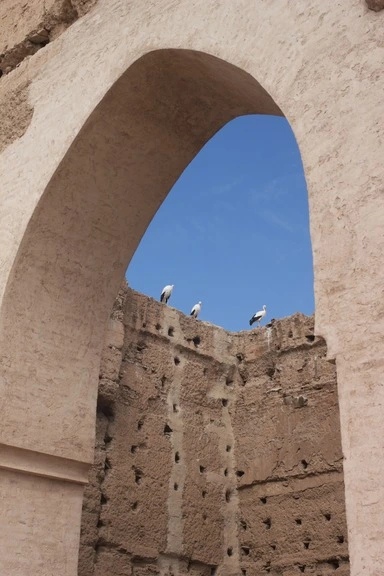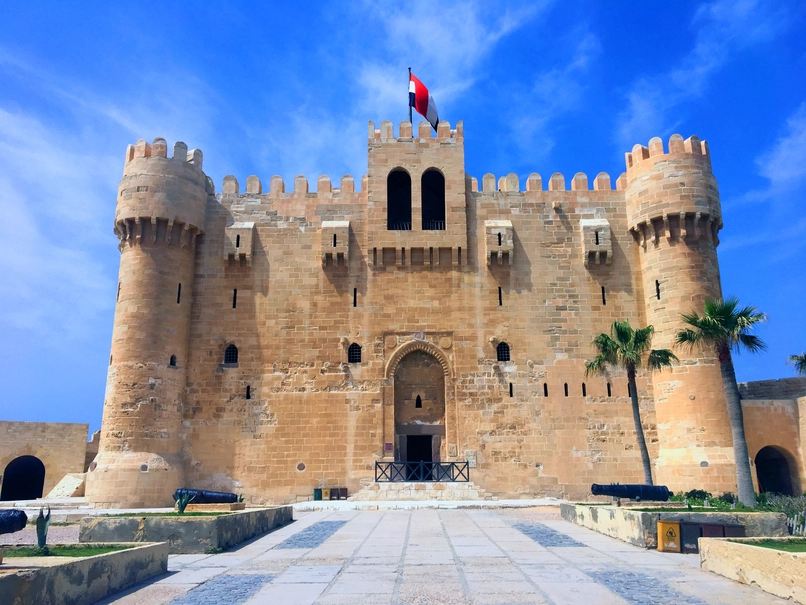Traveling in Africa is one of the most exhilarating and informative experiences you can ever have as a tourist. It allows you to get a glance of Ancient Africa and its must-visit museums and Temples. Ancient Africa is depicted through the earliest tombs famous in the African continent, the iconic temples and the most famous temples on the continent. This article guides you through the most iconic Temples and Palaces on the continent of Africa.
- Bahia Palace

This is an ancient palace located in Marrakesh, a chief town in Morocco. Marrakesh lies west of the Atlas Mountains foothills. Every day, the doors of Bahia Palace are opened for visitors from 9 a.m. to 5 p.m. Tourists are allowed to visit the premises even when the royal family is homing at the palace. Per head, the fee is usually 10 Moroccan dirhams or slightly over $1.
The building was started in 1859 and finished between 1894 and 1900. It gets its name from the brilliant architecture and decorations exhibited therein, with the term ‘bahia’ meaning ‘beautiful’ or ‘brilliant’ in Arabic. Previous tourists recommend visiting in the morning hours, when the visitors are few. The floors of the palace are paved using zellij tiles and marble.
- Luxor Temple

This is a massive Temple of the Ancient Egyptian Era. It is situated on the eastern bank of River Nile in the today’s city of Luxor. It was constructed in around 1400 BCE. It is the perfect exhibition of the Egyptian Architectural designs, making it a must-visit in the Luxor region of Egypt.
This project was started by Amenhotep III and continued over the ages by Ramses II and Tutankhamun, among other pharaohs. In Ancient Egypt, this was the biggest temple and the most important religious gathering point. Until today, the temple remains in use almost always, for worship and other religious purposes.
- El Badiii-Ksibat Nhass Palace

Also called the Badi’ Palace, it is currently a ruined palace which is situated in Marrakesh, Morocco. Its construction was flagged by sultan Ahmad al-Mansur who ruled in the Saadian dynasty in 1578. It was opened for use in 1593, being used as a Palace for the Sultan. It is also known as The Incomparable Palace.
The palace was also used for receptions and was magnificently designed to expose the vast wealth of the Sultan. Its decoration materials were imported from Italy and Mali, among other places. Currently, it serves as a prominent tourist attraction site and also an exhibition arena in Marrakesh, Morocco.
- Abu Simbel Temples

These are a must-visit historic site sitting on the Abu Simbel village in Upper Egypt. The pre-historic site is made up of a massive twin-rock-cut temple near the Egypt-Sudan border. The vast structure is about 230 km southwest of the Aswan High Dam and forms part of a UNESCO World Heritage Site called the Nubian Monuments.
Originally, in the 13th century, the two temples were hewn from a massive rock of the mountainside when Pharaoh Ramesses II was the ruler. During the construction of the Aswan High Dam, however, the whole site was historically moved some distance away from the dam to rescue it from getting submerged. Daily, the site receives hundreds of tourists, making it a bucket list item for The Best Historic places to visit in Africa.
- Dendera Temple of Hathor

Egypt serves as one of the most famous countries due to its vast number of ancient sites and structures. The Dendera Temple sits approximately 2.5 kilometers south-east of Dendera, Egypt. According to archaeologists and historians, this is one of the best-preserve temples in Egypt
While visiting the area, having a professional tour guide is required. The guide is given the special permits required to access the premises. Visiting privately allows tourists a longer time of being shown around the temple, compared to group visits. The temple exemplifies Egyptian influence by the Egyptian, Roman and Greek monarchs.
- Deir Al-Bahari

The Deir Al-Bahari, also known as the Dayr al-Bahri, is a set of mortuary temples and tombs situated along the Nile’s west bank, opposite Luxor city, Egypt. The complex also houses The Temple of Hatshepsut, which was built by Queen Hatshepsut’s architects. The Hatshepsut temple is believed to be among the most unique temples all over Egypt.
Unlike the other funeral temples in the New Kingdom era, which were usually built of sandstone, Deir Al-Bahari temple is distinguishable by its limestone material used to construct the entire structure. It ranks among the most magnificent temples in Egypt. built by the architects of Queen Hatshepsut.
- The Temple of Horus at Edfu

The Temple of Horus is an Egyptian temple situated on the western bank of River Nile in Edfu, Upper Egypt. It stands 36 meters high. Its construction kicked off in the second century BC at a time when the Ptolemy Dynasty pharaohs ruled Egypt. The site and its buildings still look youthful, indicating them as among Egypt’s best-preserved temples.
The Temple of Horus is among the major tourist attraction sites in the Upper Egypt and the Nile region. It features on the list of the most impressive construction exploits which were done during the Ptolemaic era. Visiting this place offers you a sense of the great dreams exploited by Ancient Egypt’s architects.
- Temple of Kom Ombo

This is an extra-ordinarily twin-temple found on River Nile’s banks, in Kom Ombo town. It was constructed between 180 BC and 47 BC. It stands only 48km from Aswan. Tourists can easily move by road from here and visit the famous Aswan High Dam.
During the Roman period, additional portions of the temple were constructed. It is dedicated to Sobek, the crocodile god and Horus (Haroeris), the two deities in Egypt.
- Citadel of Qaitbay

It was built in the 15th century by Sayf al-Din Qaitbay. It serves as a defensive fortress located in Alexandria, Egypt. The Sultan Al-Ashraf Citadel sits on the eastern side of Pharos Island northern tip.
Historians consider it among the most essential defensive strongholds used against the Ottoman Empire, not only in Egypt alone, but also along the coast of the Mediterranean Sea.
- Salah Al-Din Al Ayoubi Castle

Also called The Citadel of Cairo, it is a medieval Islamic-era fortification in Egypt’s Cairo. It was constructed by the monarch Salah ad-Din and later expanded further by the subsequent Egyptian monarchs.
It served as the Egyptian government’ seat. The Egyptian rulers resided there for approximately 700 years, from the thirteenth to the nineteenth centuries. Throughout the Islamic Cairo, this became one of the most magnificent castles and featured among the highly inspiring defensive areas.
- Medinet Habu

Medinet Habu is found near the foot of the Theban Hills. This is on River Nile’s western bank, opposite Luxor. It is an archaeological neighborhood whose inside is really nerve-racking.
Previous tourists claim that Medinet Habu is one of the best places your eyes can see in Luxor. It is easy to visit the place and the visit allows you to also visit the nearby Valley of the Queens, Colossi of Memnon, and Hatshepsut Temple, and other iconic sights.
